Igor Kuksin
The Biosensor based on electrochemical dynamics of fermentation in yeast Saccharomyces Cerevisiae
Feb 07, 2022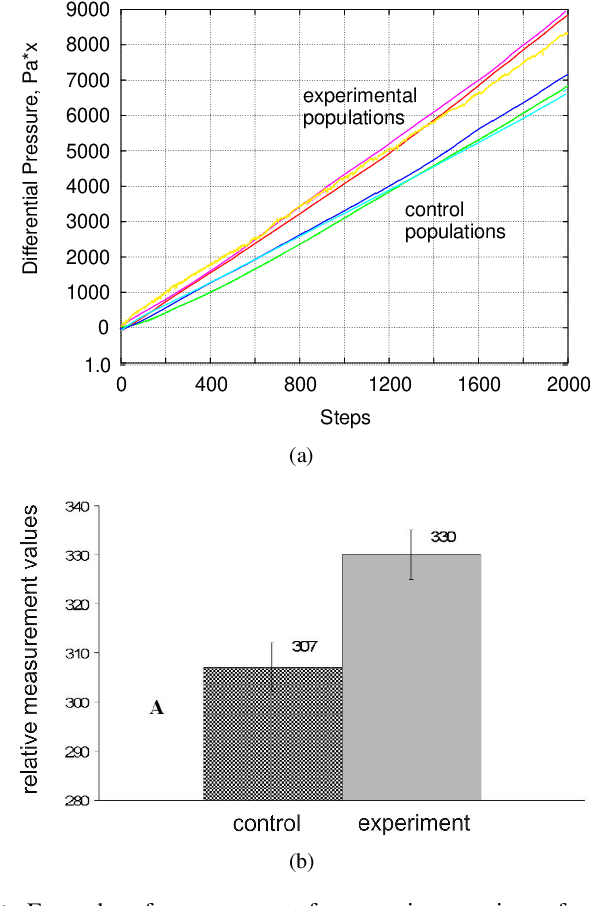
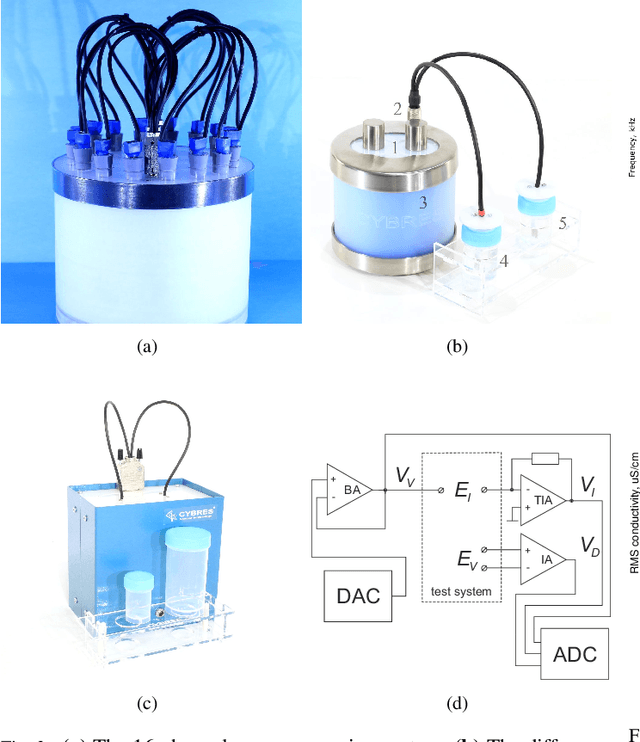
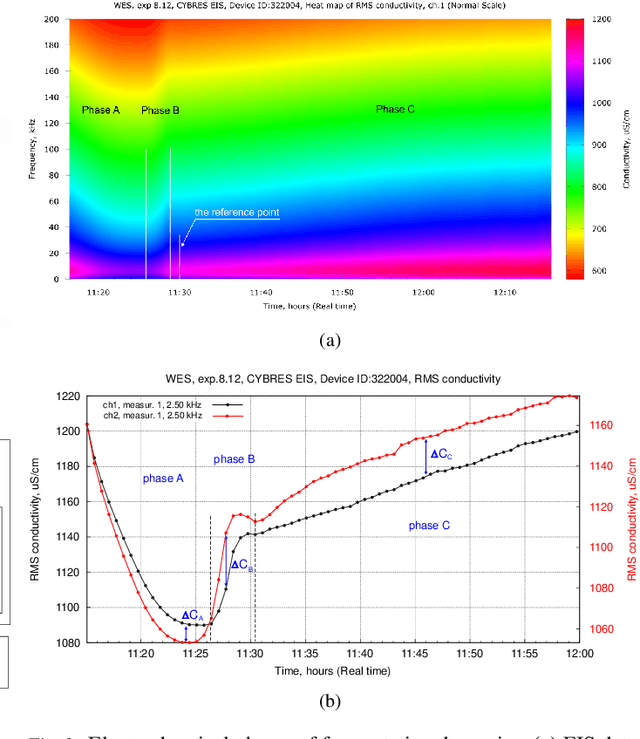
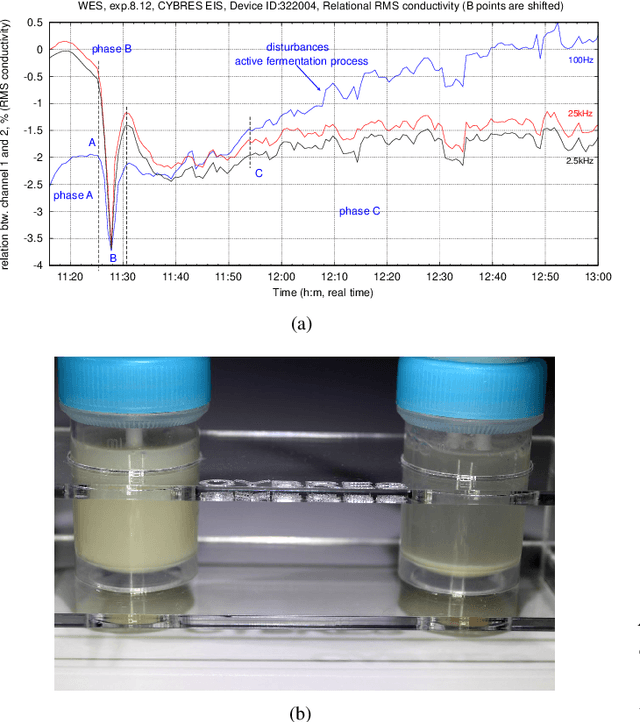
Abstract:The zymase activity of the yeast Saccharomyces Cerevisiae is sensitive to environmental parameters and is therefore used as a microbiological sensor for water quality assessment, ecotoxicological characterization or environmental monitoring. Comparing to bacterial bioluminescence approach, this method has no toxicity, excludes usage of genetically modified microorganisms, and enables low-cost express analysis. This work focuses on measuring the yeast fermentation dynamics based on multichannel pressure sensing and electrochemical impedance spectroscopy (EIS). Measurement results are compared with each other in terms of accuracy, reproducibility and ease of use in the field conditions. It has been shown that EIS provides more information about ionic dynamics of metabolic processes and requires less complex measurements. The conducted experiments demonstrated the sensitivity of this approach for assessing biophotonic phenomena, non-chemical water treatments and impact of environmental stressors.
Flora robotica -- An Architectural System Combining Living Natural Plants and Distributed Robots
Sep 13, 2017
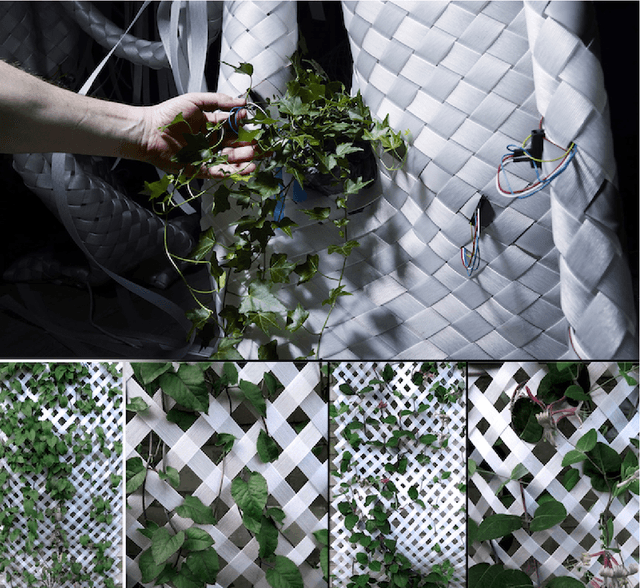
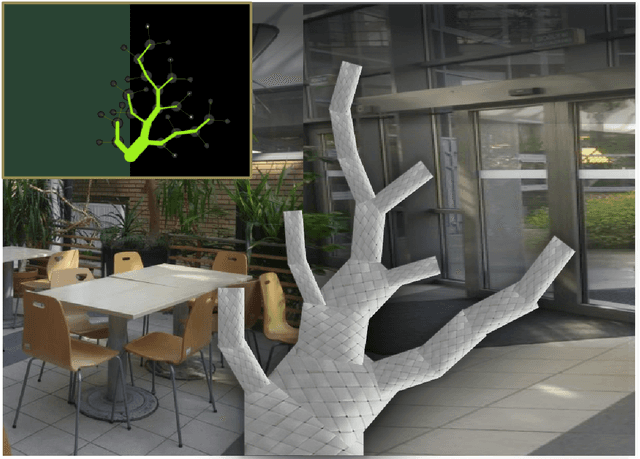
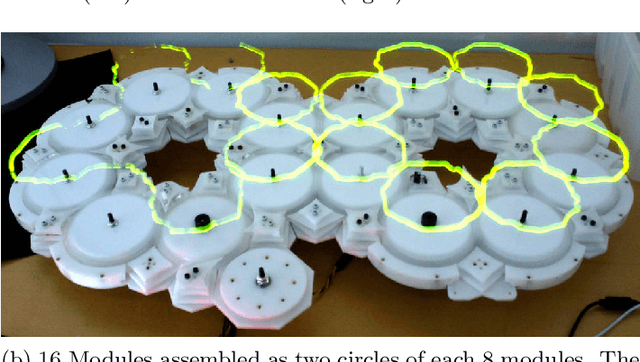
Abstract:Key to our project flora robotica is the idea of creating a bio-hybrid system of tightly coupled natural plants and distributed robots to grow architectural artifacts and spaces. Our motivation with this ground research project is to lay a principled foundation towards the design and implementation of living architectural systems that provide functionalities beyond those of orthodox building practice, such as self-repair, material accumulation and self-organization. Plants and robots work together to create a living organism that is inhabited by human beings. User-defined design objectives help to steer the directional growth of the plants, but also the system's interactions with its inhabitants determine locations where growth is prohibited or desired (e.g., partitions, windows, occupiable space). We report our plant species selection process and aspects of living architecture. A leitmotif of our project is the rich concept of braiding: braids are produced by robots from continuous material and serve as both scaffolds and initial architectural artifacts before plants take over and grow the desired architecture. We use light and hormones as attraction stimuli and far-red light as repelling stimulus to influence the plants. Applied sensors range from simple proximity sensing to detect the presence of plants to sophisticated sensing technology, such as electrophysiology and measurements of sap flow. We conclude by discussing our anticipated final demonstrator that integrates key features of flora robotica, such as the continuous growth process of architectural artifacts and self-repair of living architecture.
 Add to Chrome
Add to Chrome Add to Firefox
Add to Firefox Add to Edge
Add to Edge